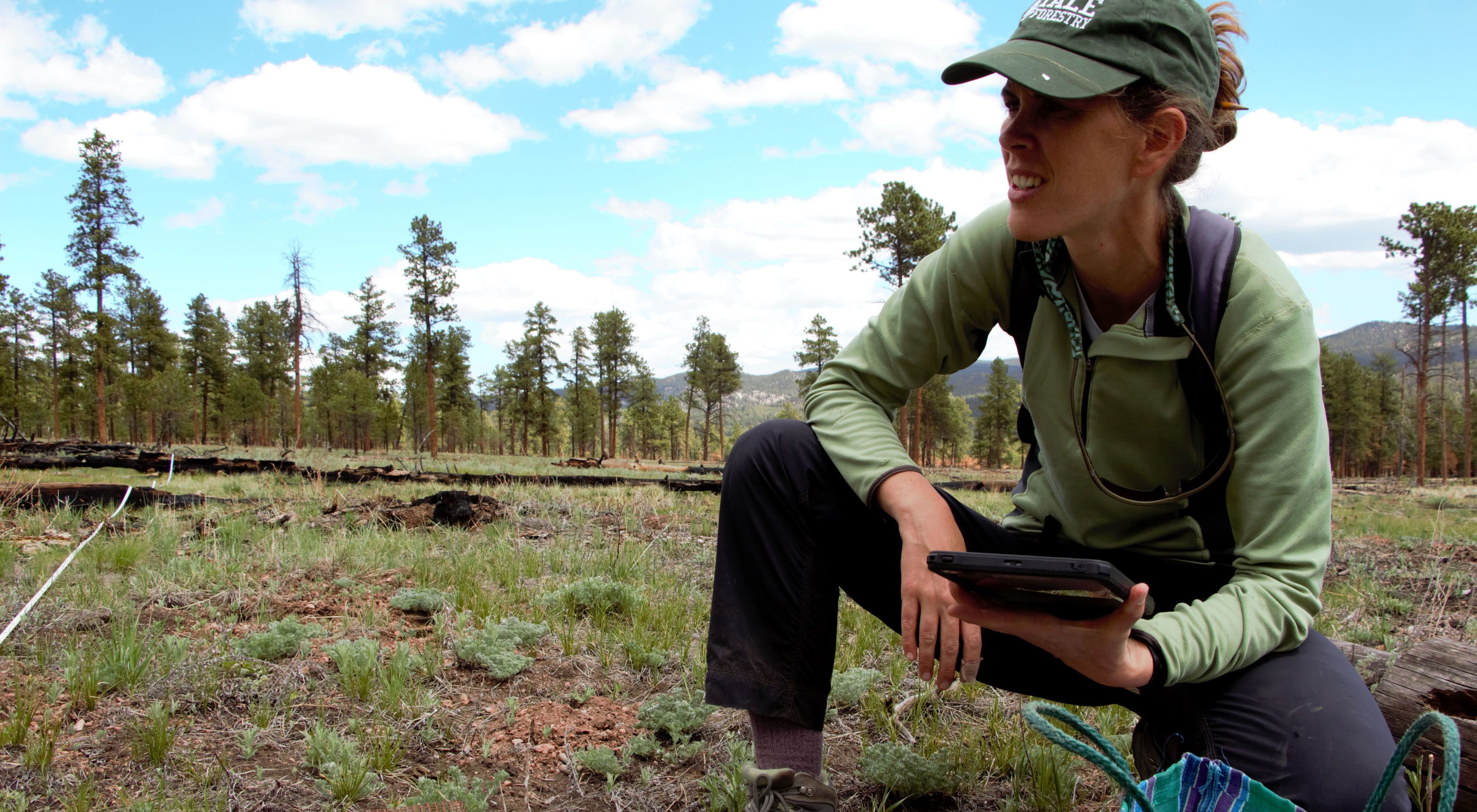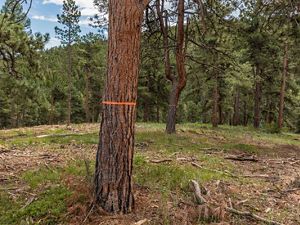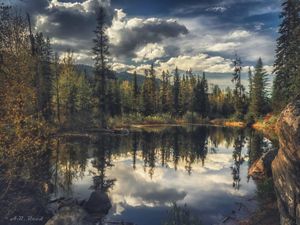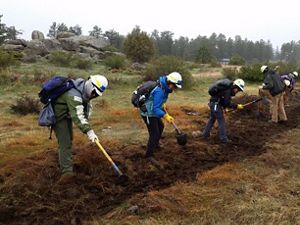Recovering from Wildfire: Using Drones to Plant Trees
Scientists are testing new ways to plant trees in forests that have been decimated by wildfires.
We’re driving through mile after mile of burned forest at the site of the Hayman Fire, the biggest wildfire in Colorado’s history. “I remember coming out here in 2002 after it burned…it looked like hills of gravel, there was just nothing. I went down to the South Platte River and it was full of dead fish, the smell was terrible,” Parker Titus, of the Colorado Forest Program, said.
Sixteen years later, the forest has not recovered and new trees are hard to find on this landscape. The hillsides are still covered in charred tree trunks and stumps, although new grasses, flowers, and underbrush have turned the ground green.
It turns out that nature may need some help reforesting these severely burned areas. That's why TNC scientists are using drones, bicycle power and a lot of ingenuity to test mehtods of distributing seeds throughout badly burned forests.
Wildfire in Colorado
As our climate heats up, wildfires are burning more often and more severely in Colorado. The Nature Conservancy’s Forest and Fire team works to restore and protect healthy forests and reduce the risk of catastrophic wildfires. They use prescribed fire, paired with thinning of trees and brush, as tools to restore our forests. Alongside partners we’ve trained, our team has restored more than 10,000 acres in the last five years.
But many places in Colorado, like the Hayman burn scar, have already been ravaged by large wildfires. It’s true that fire is a natural—and crucial—component of forest health. However, a national policy of suppressing wildfires for the past hundred years has disrupted natural systems. Overly dense forests are at risk for unnaturally large wildfires.
Quote
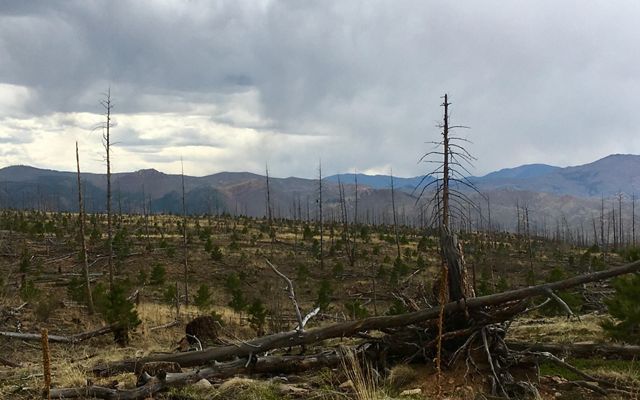
Forest health depends on a natural cycle of growth, fire and regeneration.
We’ve seen this happen many times in Colorado. When wildfires get too large, they wipe out all the trees in an area and scorch the soil, making it hard for new growth to take root. In the past 30 years, only 2 percent of the burned areas along Colorado’s Front Range have been replanted with trees.
Forest health depends on a natural cycle of growth, fire and regeneration. Low-intensity wildfires only kill smaller trees and plants, while large trees like the fire-resistant Ponderosa Pine survive. In contrast, large, high-severity wildfires leave behind patches with no surviving trees. It can take 500 to 1,000 years for high-severity patches to recover naturally. TNC’s Teresa Chapman has identified 150,000 acres in Colorado that won’t regenerate on their own. At this pace, we are losing our forests faster than they are growing back.
Restoring Burned Forests
Reforestation is important because it restores vital habitat for wildlife like the Abert’s squirrel, filters the water we drink in Colorado cities like Denver and Colorado Springs, and restores the places where we love to relax, explore and play. Plus, trees capture carbon from the air, a crucial process for fighting climate change.
In partnership with regional scientists, TNC applied scientist Teresa Chapman and watershed forest manager Catherine Schloegel are working to answer questions about the success of past reforestation efforts in burn scars and to pilot new ways to establish trees. Most planting projects use seedlings, because they often have a higher rate of survival. In much of Colorado, seedlings have been planted within 100 feet of forest roads. The problem is that the interior of these fire scars is not recovering, and we need a way to establish trees far from roads.
Spreading Tree Seeds Using Drones
TNC has been working on an innovative solution. To reforest the interior of severely burned patches, we can distribute seeds using drones, do our best to protect them from predators, and wait for them to grow into a forest.
In partnership with regional scientists, TNC is comparing three different methods of planting seeds. This information could inform a large-scale reforestation project.
- Seed balls
Based on the ancient techniques of the Egyptians, we are creating seed balls. Seeds are rolled into a ball with clay and nutrients such as manure, compost and coffee grounds. Creating hundreds of seed balls is time consuming, so with support from the University of Arizona, Catherine Schloegel built a bicycle-powered machine to create seed balls. She built a wooden bike stand, and then used the bicycle to rotate a large barrel. Adding manure, clay, seeds and water, the barrel quickly created hundreds of seed balls. The balls were dried for a week before planting. - Seed squares
Over the past year, our team has been working with a for-profit reforestation company that uses drones to disperse seeds encased in a biodegradable carrier. The carrier is a 1-inch square of material containing cayenne pepper and animal deterrents. - Naked seeds
The third method is simply planting seeds. This method is cheap, but more vulnerable to predation. “We’ve heard that everything from voles to pocket gophers to coyotes might come and eat the seeds,” says Schloegel. On top of the threat of animals, these seeds could get washed away by rain, carried away by birds, or simply fail to grow due to lack of nutrients.
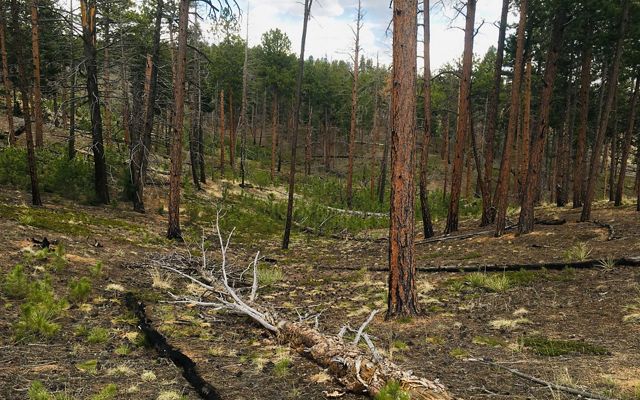
If any of these methods are successful, drones can be used to disperse seeds on the ground in programmable locations based on soil moisture and surface composition. This allows foresters to take advantage of precipitation and weather patterns and plant at the ideal times and locations.
To see which seed-planting method works best, researchers will monitor germination throughout the summer. This project could have implications for many miles of burned forests in Colorado and beyond.
TNC is looking at the bigger picture to develop methods that efficiently reforest high-severity burn patches. “We just have to think like a forest,” said Schloegel. Trees produce seed-laden cones in the fall. In thinking like a forest, we’re testing both spring and fall planting to mimic natural processes.
The results of the study are months, maybe years away. But the implications could be enormous.
“[This project] might be the best investment we’ve ever made,” said Parker.
